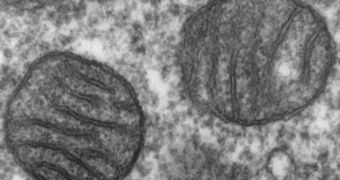In the case of severe trauma patients, there are more things threatening their lives other than the severity of their wounds, or possible bacterial infections. Researchers have finally cracked an old medical mystery, which has been enduring for the past 15 years. They learned that substances released from the power plant of the cell, the mitochondria, can mimic a bacterial infection in manifestations and symptoms, fooling the immune system to attack them, to disastrous consequences. The finding opens up a new line of research in how to care for severe trauma patients, the experts behind the finding say.
A long time ago expert Carl Hauser, who is now at Harvard Medical School, in Boston, Massachusetts, came across a very peculiar case. He was taking care of a patient, who had suffered from a broken pelvis. Despite providing the man with the best care available at the time, doctors were losing the battle. The expert and his colleagues ran every possible test they could think of, in hopes of determining whether the culprit for the man's deteriorating condition was a bacterial infection. The symptoms seemed to match, but there was not a single trace of bacterial invaders in any of the collected samples. Eventually, the man was cured by draining him of a 30-liter mass of clotted blood.
He miraculously recovered, but doctors were left puzzled as to what had happened. Now, more than 15 years later, Hauser reports his conclusions in the latest issue of the esteemed scientific publication Nature. He explains that the patient's own mitochondria were conspiring against him. The expert argues that a large number of mitochondrial compounds, which are regularly kept inside these organelles, escaped into the bloodstream when the violent trauma occurred. The immune system immediately responded to the new threat, considering it to be a bacterial infection. Hence the symptoms the man was exhibiting, but none of the alleged causes.
This “misbehavior” of the immune system almost cost the man his life, but would have otherwise saved him had the condition indeed been a bacterial infection. When the root cause is missing, but the response is still triggered, the dangerous condition known as systemic inflammatory response syndrome (SIRS) develops. It can cause devastating consequences, such as massive fever, abnormal heartbeats, difficulties in breathing, organ failure, and eventually death. SIRS is currently estimated to be responsible for the vast majority of infection-related deaths in modern hospitals, regardless of whether its caused by bacteria such as MRSA, or by the trauma itself, Nature News reports.

 14 DAY TRIAL //
14 DAY TRIAL //